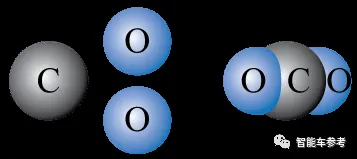Lithium-ion batteries have been widely used in portable electronic equipment, energy storage equipment and other fields. However, with the gradual application of lithium-ion batteries in smart phones, electric vehicles and other fields, the demand for lithium grows rapidly year by year, while the global reserves of lithium are very limited and unevenly distributed, resulting in a rapid increase in raw material prices, seriously restricting the rapid development of low-cost, high-performance energy storage devices in China. Potassium element has similar physicochemical properties with lithium, and its abundant reserves, low cost, and lower redox potential compared with sodium, which makes the secondary battery system based on potassium ions receive wide attention. In addition, in recent years, dual-carbon batteries have received wide attention in the industry due to the use of environmentally friendly and cheap graphite materials for both positive and negative electrodes, which have the advantages of low cost and high operating voltage.
Combining the respective advantages of potassium ion batteries and dual-carbon batteries, Tang Yongbing and his team members Ji Bifa and Zhang Fan successfully developed a new type of high-performance, low-cost, environmentally friendly dual-carbon potassium ion battery. The battery adopts intermediate-phase carbon microspheres as the negative electrode and expanded graphite as the positive electrode; the electrolyte adopts cheap and easy-to-obtain potassium hexafluorophosphate as the potassium salt electrolyte dissolved in organic solvents. The reaction mechanism is as follows: when charging, potassium ions in the electrolyte move to the surface of the negative electrode of the intermediate-phase carbon microspheres and are embedded in the graphite layer, and at the same time, the anion of hexafluorophosphate is inserted into the anode graphite; when discharging, the potassium ions are detached from the negative electrode graphite layer, and at the same time, hexafluorophosphate is de-embedded from the anode graphite and is returned to the electrolyte.
The study shows that the median discharge voltage of the new cheap dual-carbon potassium ion battery is as high as 4.5V, and a single button cell can light up two LEDs at the same time, and the capacity of the battery has almost no attenuation after 100 turns of charge/discharge cycle, which makes it possible to meet the requirements of high-voltage devices. Relative to the existing traditional lithium-ion battery technology, the new battery will significantly reduce the production cost, but also has the advantages of environmental friendliness, high security, energy density is relatively high, so it has a wide range of applications in large-scale renewable and clean energy storage, communication back-up power and other fields.
[___Zhongshun Xinneng Human Resources Department July 31, 2017 Responsibility: Xiaogeng]




